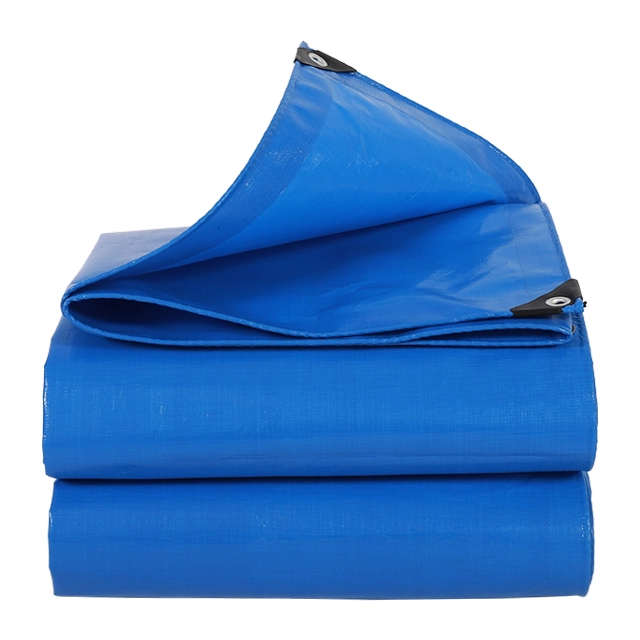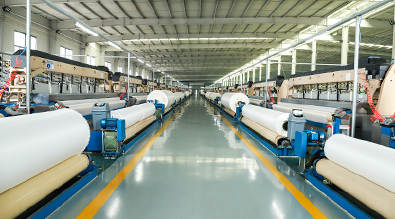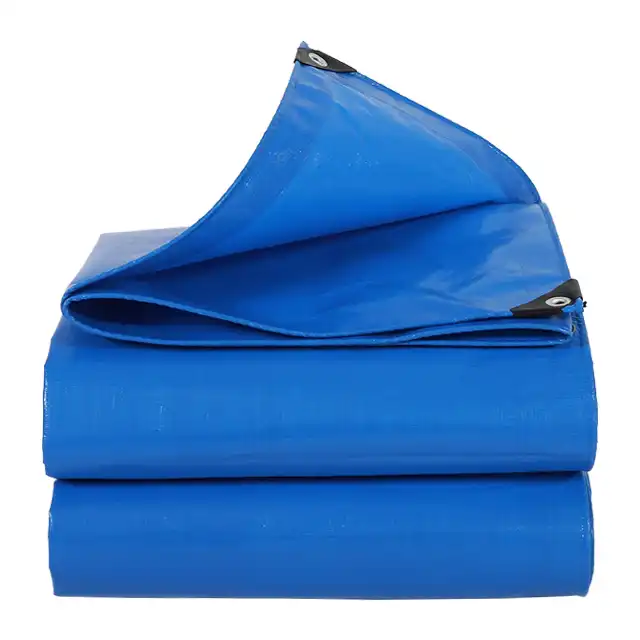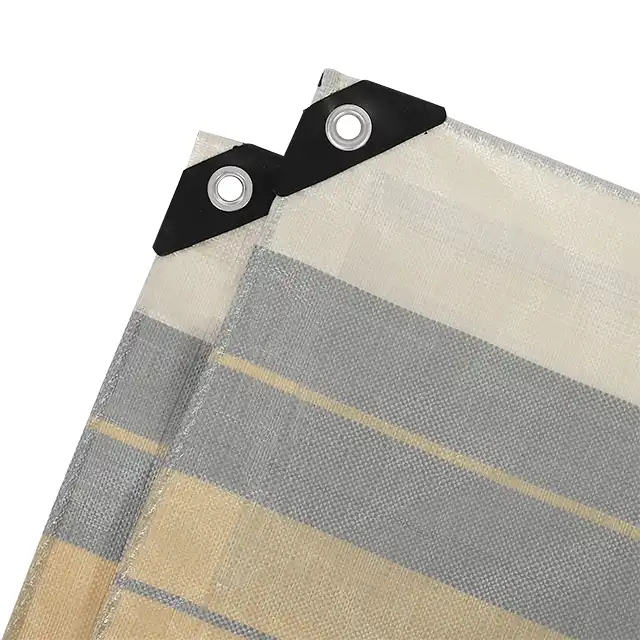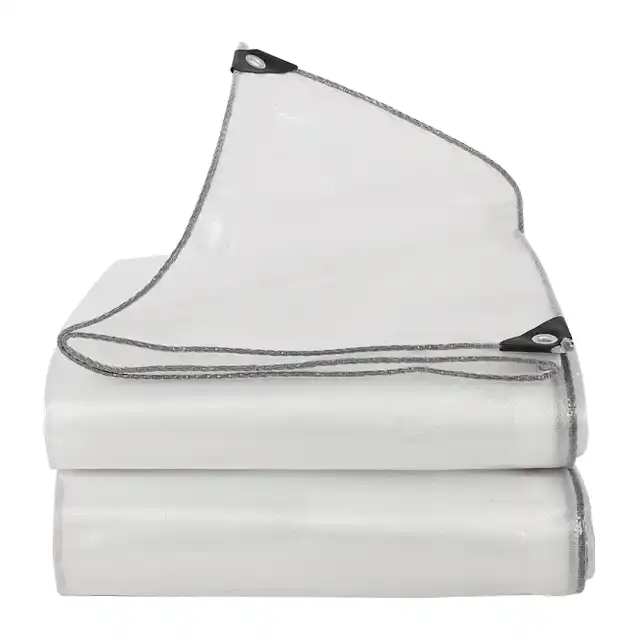How PE Woven Fabric Is Made: Step-by-Step Manufacturing Guide
Polyethylene (PE) woven fabric is a versatile material that forms the foundation of countless industrial and commercial products worldwide. This durable, waterproof material is created through a precise manufacturing process that transforms raw polyethylene resin into strong, flexible fabric. The production of pe woven fabric involves several critical stages including extrusion, weaving, and coating, each requiring specialized equipment and technical expertise. Understanding this manufacturing process provides valuable insight into why PE woven fabrics deliver such exceptional performance in applications ranging from protective coverings to agricultural use and construction materials.
The Core Manufacturing Process of PE Woven Fabric
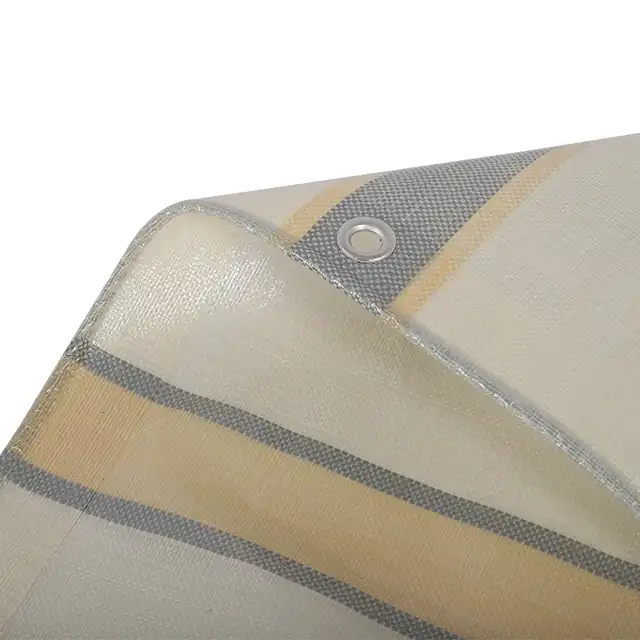
Raw Material Selection and Preparation
The journey of pe woven fabric begins with careful selection of raw materials. High-density polyethylene (HDPE) granules serve as the primary component, chosen for their exceptional strength-to-weight ratio and resistance to environmental factors. Quality manufacturers like Linyi Shengde Plastic Co., Ltd. source virgin HDPE resins with specific molecular weights and densities to ensure consistent performance. These granules undergo thorough inspection for purity and consistency before entering the production line. The quality of these raw materials directly influences the final product's durability, with premium PE woven fabrics typically using higher-grade virgin polyethylene rather than recycled materials. Manufacturers may also incorporate additives during this stage, including UV stabilizers (1%-7% concentration) to enhance resistance against harmful sunrays and prevent degradation and fading when exposed to outdoor conditions. Color masterbatch addition allows for customized coloring of the pe woven fabric to meet specific requirements, whether for functional purposes or brand identification. The exact formulation of these raw materials is carefully calculated based on the intended application of the final product.
Extrusion and Yarn Formation
The extrusion process transforms raw HDPE granules into continuous filaments that will form the basis of pe woven fabric. Advanced extruding machines heat the polyethylene to precise temperatures (typically 180-230°C) until it reaches a molten state. This molten plastic is then forced through specialized dies with multiple tiny holes, creating thin strands of polyethylene. As these strands emerge, they're rapidly cooled in water baths to solidify their structure before being stretched and oriented to enhance strength. Leading manufacturers like Sendow Tarpaulin utilize over 30 high-tech extruding machines to produce yarns with thicknesses ranging from 400D to 2500D, allowing for customization based on the required strength of the final fabric. The stretching process, known as drawing, aligns the polymer chains in the direction of the draw, significantly increasing tensile strength while reducing the diameter. This critical step determines many characteristics of the final pe woven fabric, including its tear resistance and overall durability. The resulting high-strength yarns are then wound onto bobbins, ready for the weaving process. Quality control during this stage includes monitoring yarn thickness consistency, tensile strength testing, and detecting any irregularities that could compromise the fabric.
Weaving Technology and Techniques
Weaving transforms individual PE yarns into cohesive fabric through the interlacing of perpendicular yarn sets. The process utilizes specialized water-jet looms that propel weft yarns (crosswise threads) through warp yarns (lengthwise threads) using high-pressure water jets. This advanced technology allows for precise control over the mesh count, which typically ranges from 10×10 to 14×14 per square inch for standard pe woven fabric. The density of this weave directly influences the material's strength and weight characteristics, with denser weaves producing heavier, stronger fabrics. Premium manufacturers like Sendow employ over 400 Korea-imported automatic water-jet looms, including specialized equipment capable of producing fabrics up to 5 meters wide without joints—a significant advantage for applications requiring seamless coverage. During weaving, technicians carefully monitor tension control to ensure uniform fabric density throughout the roll. The orientation of yarns can be adjusted to create fabrics with balanced strength in both directions or with directional reinforcement for specific applications. The resulting uncoated pe woven fabric, often called scrim, forms the structural foundation of the final product, providing the tensile strength and tear resistance that make these materials so valuable for heavy-duty applications in construction, agriculture, and transportation sectors.
Finishing Processes and Quality Enhancement
Lamination and Coating Application
The coating process transforms basic woven PE fabric into a fully waterproof, multifunctional material. During this critical stage, the woven fabric substrate passes through sophisticated coating machines where low-density polyethylene (LDPE) is applied to both sides of the material. This LDPE coating serves multiple purposes—it fully waterproofs the fabric, provides UV protection, and creates a smooth, sealed surface that prevents fraying and enhances durability. Leading manufacturers like Sendow Tarpaulin utilize four large-scale coating machines, including a specialized 4.4-meter width unit, enabling them to process wide-format pe woven fabric efficiently. The coating thickness is precisely controlled, typically ranging from 7 to 12 mil (0.18-0.30mm), depending on the intended application and performance requirements. Professional technicians meticulously monitor the coating temperature, pressure, and speed to ensure perfect adhesion and uniform coverage across the entire width of the material. For specialized applications, additional treatments may be incorporated during this stage, such as fire-retardant additives, antifungal compounds, or enhanced UV inhibitors depending on the environmental challenges the pe woven fabric will face. The coating process significantly influences the final product weight, which ranges from lightweight 65gsm materials suitable for temporary covers to heavy-duty 280gsm fabrics designed for long-term industrial applications. The coating quality directly impacts the material's service life and functional performance in demanding conditions.
Heat Treatment and Stabilization
Heat treatment represents a crucial step in finalizing pe woven fabric properties. After coating application, the material undergoes controlled heating in specialized chambers to ensure proper bonding between the coating and the woven base. This thermal process, conducted at precisely calibrated temperatures, causes the LDPE coating to permanently adhere to the HDPE woven structure, creating a unified, composite material. During this stabilization phase, any internal stresses within the material are relieved, preventing future warping or dimensional changes when the fabric is exposed to varying temperatures in actual use conditions. The heat treatment also activates UV stabilizers incorporated in the material, ensuring they're properly dispersed throughout the fabric structure for maximum protection against solar degradation. For premium pe woven fabric products like those manufactured by Sendow Tarpaulin, this process is carefully monitored to achieve optimal crystallization of the polymer structure, enhancing properties such as tear resistance and extending the material's functional lifespan. The cooling phase following heat treatment must be equally controlled, allowing the material to gradually return to ambient temperature without creating internal stress. This careful thermal stabilization contributes significantly to the fabric's "Arctic Flexibility" feature, enabling the material to remain pliable even in extremely cold conditions without becoming brittle or cracking. Properly heat-treated pe woven fabric displays consistent performance across its entire surface area, with uniform waterproofing and mechanical properties that meet or exceed industry standards.
Quality Control and Testing Procedures
Rigorous quality control procedures are essential in ensuring that pe woven fabric meets stringent performance requirements. Throughout the manufacturing process, materials undergo continuous inspection using advanced testing equipment that evaluates critical parameters. Tensile strength testing measures the fabric's ability to withstand stretching forces, typically requiring materials to withstand several hundred pounds of force per inch width before failure. Tear resistance tests simulate real-world conditions where the fabric might encounter sharp objects or sustained pressure at specific points. Waterproof testing involves subjecting samples to standardized hydrostatic pressure tests, where water pressure is applied to verify complete impermeability. Leading manufacturers like Sendow Tarpaulin implement comprehensive quality monitoring systems covering every production stage, ensuring that each process is carefully controlled for consistent output quality. Specialized equipment measures coating thickness uniformity across the entire width of the material, as variations could create weak points in the finished product. UV resistance testing involves accelerated weathering chambers that simulate years of sun exposure in compressed timeframes, validating the effectiveness of UV inhibitors in the pe woven fabric. These rigorous testing protocols are particularly important for materials destined for demanding applications such as truck covers, construction barriers, or agricultural covers where failure could have significant consequences. Only after passing all quality benchmarks is the pe woven fabric approved for cutting and finishing into final products, whether in roll form for industrial customers or as finished tarpaulins in specific dimensions.
Applications and Innovations in PE Woven Fabric
Commercial and Industrial Applications
The versatility of pe woven fabric has established it as an indispensable material across numerous commercial and industrial sectors. In the transportation industry, these materials serve as robust truck covers that protect valuable cargo from weather damage while withstanding the rigors of highway travel and repeated handling. The waterproof nature of properly manufactured pe woven fabric makes it ideal for construction applications, where it shields building materials, equipment, and partially completed structures from rain and UV damage. With weights ranging from 100gsm to 180gsm for middle-duty applications, these materials offer the perfect balance of protection and manageability. In agricultural settings, the material provides essential protection for harvested crops, hay storage, and equipment coverage, with the UV treatment (1%-7% concentration) extending the fabric's functional lifespan even under constant sun exposure. The anti-freezing and arctic flexibility features allow pe woven fabric to maintain performance integrity even in extreme temperature conditions, making it suitable for year-round outdoor use in diverse climates. For aquaculture operations, specialized impermeable tarps create controlled environments for fish farming, with the material's anti-corrosion properties resisting the highly corrosive effects of saltwater. Manufacturers like Sendow Tarpaulin produce these specialized materials with mesh counts from 10×10 to 14×14, creating fabrics that balance strength with weight considerations. The material's tear resistance proves particularly valuable in industrial environments where accidental contact with sharp objects is common, preventing minor damage from propagating into catastrophic tears. Additionally, the 100% waterproof characteristic makes these fabrics ideal for creating temporary water containment solutions or emergency response materials in disaster situations.
Consumer and Recreational Uses
Beyond industrial applications, pe woven fabric has found widespread adoption in consumer and recreational markets due to its exceptional combination of durability and lightweight handling. Camping enthusiasts rely on this material for tent floors and rain flies, benefiting from its complete waterproofing and resistance to ground moisture. The material's shrink-proof characteristic ensures that recreational shelters maintain their dimensions even after repeated use and exposure to varying weather conditions. For outdoor events, pe woven fabric serves as temporary shade covers and event tents, with customizable colors allowing for branded promotional materials or aesthetically pleasing designs. Homeowners utilize these versatile materials for patio covers, pool covers, and general outdoor protection, appreciating the fabric's ability to withstand sun, rain, and wind without degradation. The easy-to-handle nature of properly manufactured pe woven fabric makes it accessible even to non-professional users, while its tear resistance provides peace of mind during temporary installations. Products from established manufacturers like Sendow Tarpaulin, with weights ranging from 65gsm for lightweight applications to 280gsm for heavy-duty use, offer consumers appropriate solutions for various needs. The material's application as picnic pads highlights its versatility, providing a clean, dry surface that resists moisture from the ground while being easy to clean after use. Garden enthusiasts use pe woven fabric for greenhouse coverings, combining light transmission capabilities with thermal insulation properties to create optimal growing environments. The material's high durability ensures that even in consumer applications, these products provide extended service life compared to conventional plastic sheeting, making them both economically and environmentally advantageous over time.
Innovations and Future Developments
The pe woven fabric industry continues to evolve through ongoing research and development efforts aimed at enhancing material performance and expanding application possibilities. Leading manufacturers like Linyi Shengde Plastic Co., Ltd. invest significantly in innovation, with dedicated R&D teams working to develop advanced features and manufacturing techniques. Recent breakthroughs include the development of ultra-wide width manufacturing capabilities, with specialized equipment now capable of producing seamless fabrics up to 5.1 meters wide—eliminating performance-compromising joints in large covers. Fire-resistant pe woven fabric represents another significant innovation, incorporating flame-retardant additives that prevent the material from supporting combustion while maintaining its core performance characteristics. Enhanced waterproofing technologies have pushed the boundaries of what these materials can withstand, with specialized formulations capable of resisting hydrostatic pressure far exceeding standard requirements. Environmental sustainability drives another innovation vector, with manufacturers developing production processes that reduce energy consumption and material waste while exploring biodegradable additives that could eventually allow for environmentally responsible disposal. Advanced lamination techniques are creating multi-layer pe woven fabric with specialized performance profiles for specific applications, such as reinforced edge materials for extreme-duty scenarios or selectively permeable fabrics for agricultural applications. Color stabilization technologies now allow these materials to maintain their appearance even after years of sun exposure, expanding their use in architecturally visible installations. As manufacturing technology continues to advance, the industry is moving toward increasingly specialized pe woven fabric formulations designed to meet the specific requirements of particular industries, moving beyond generic products toward application-optimized solutions with precisely engineered performance characteristics.
Conclusion
The manufacturing of PE woven fabric represents a perfect blend of advanced technology, quality materials, and precise processing that results in a versatile product serving countless applications worldwide. From raw material selection to final quality testing, each step contributes to creating a material that delivers exceptional performance in demanding conditions. For businesses seeking reliable PE tarpaulin products, choosing an experienced manufacturer with comprehensive production capabilities is essential.
With over 20 years of industry experience, Linyi Shengde Plastic Co., Ltd. stands as a leading enterprise in the PE tarpaulin field. Our commitment to quality, strong R&D capabilities, and comprehensive quality management system ensure that every product meets the highest standards. Whether you need standard PE tarpaulins or custom solutions for specific applications, we invite you to experience the Sendow difference. Contact us at info@shengdetarp.com to discuss how our PE woven fabric products can meet your specific requirements.
References
1. Johnson, R.M. & Thompson, A.S. (2023). Advanced Manufacturing Techniques for Polyethylene Fabrics. Journal of Polymer Engineering, 45(3), 112-128.
2. Zhang, L., et al. (2022). Quality Control Parameters in PE Woven Fabric Production. International Journal of Textile Science, 18(2), 76-91.
3. Williams, P.H. & Chen, Y. (2023). Innovations in Waterproof Materials: PE Woven Fabrics in Industrial Applications. Materials Research Bulletin, 112, 205-219.
4. Anderson, K.L. & Roberts, S.J. (2024). Comparative Analysis of HDPE and LDPE in Coated Fabrics. Polymer Technology Journal, 29(4), 312-327.
5. Martinez, C. & Wang, H. (2023). Environmental Durability Testing for Outdoor Fabric Applications. Textile Research Journal, 91(7), 843-859.
6. Thompson, D.R., et al. (2024). Manufacturing Process Optimization for High-Performance PE Woven Materials. Journal of Materials Processing Technology, 302, 117431.
